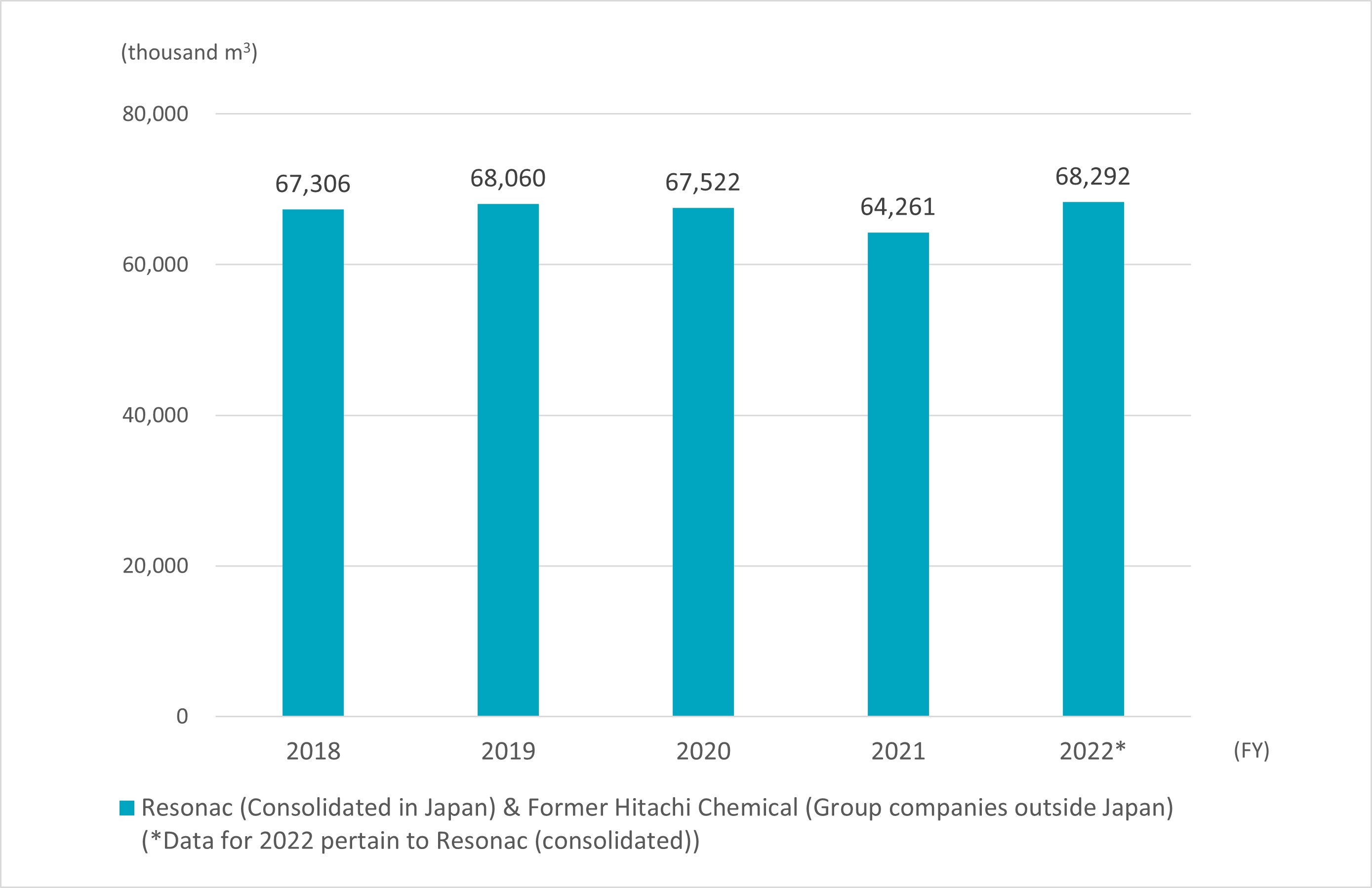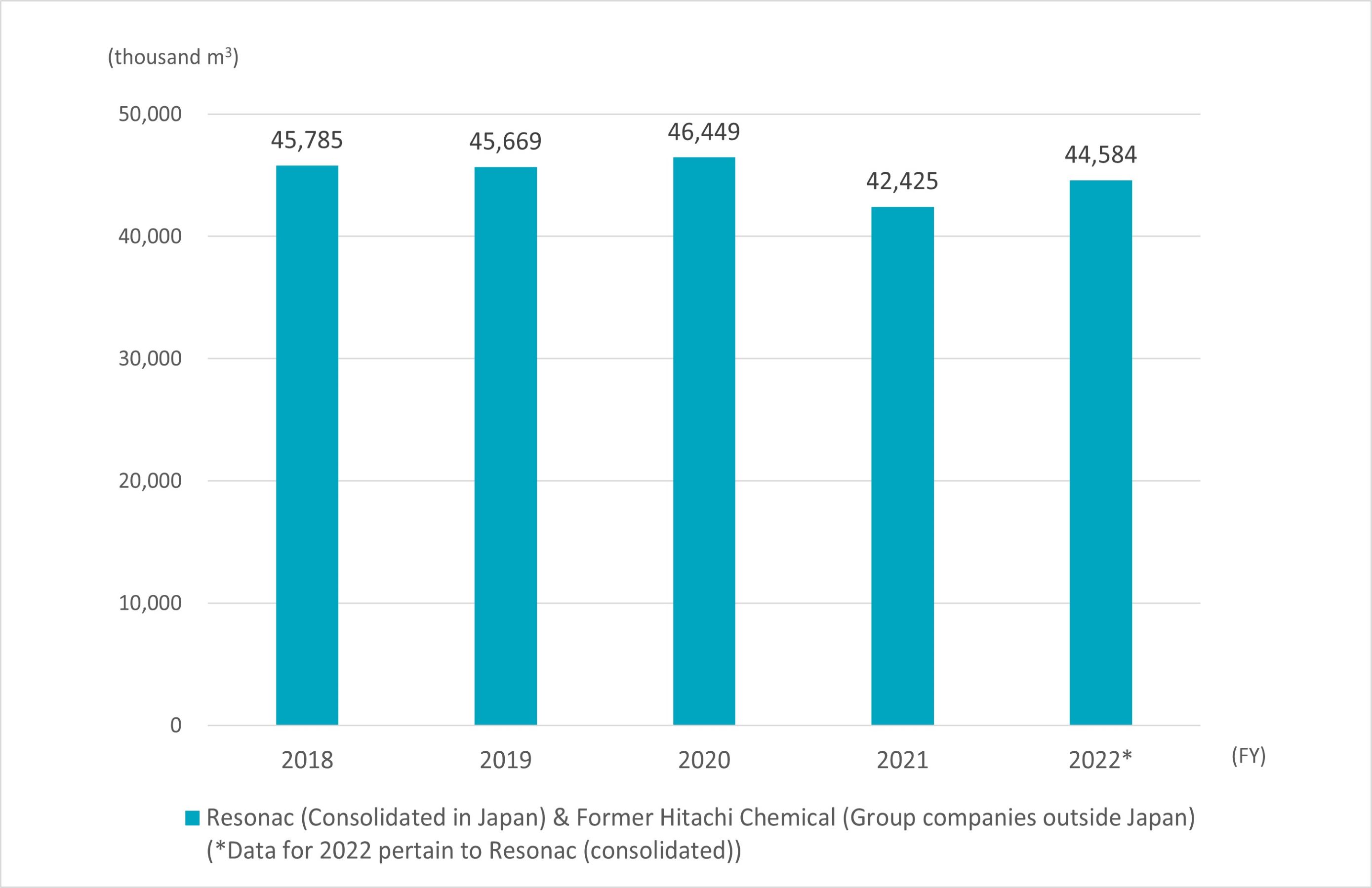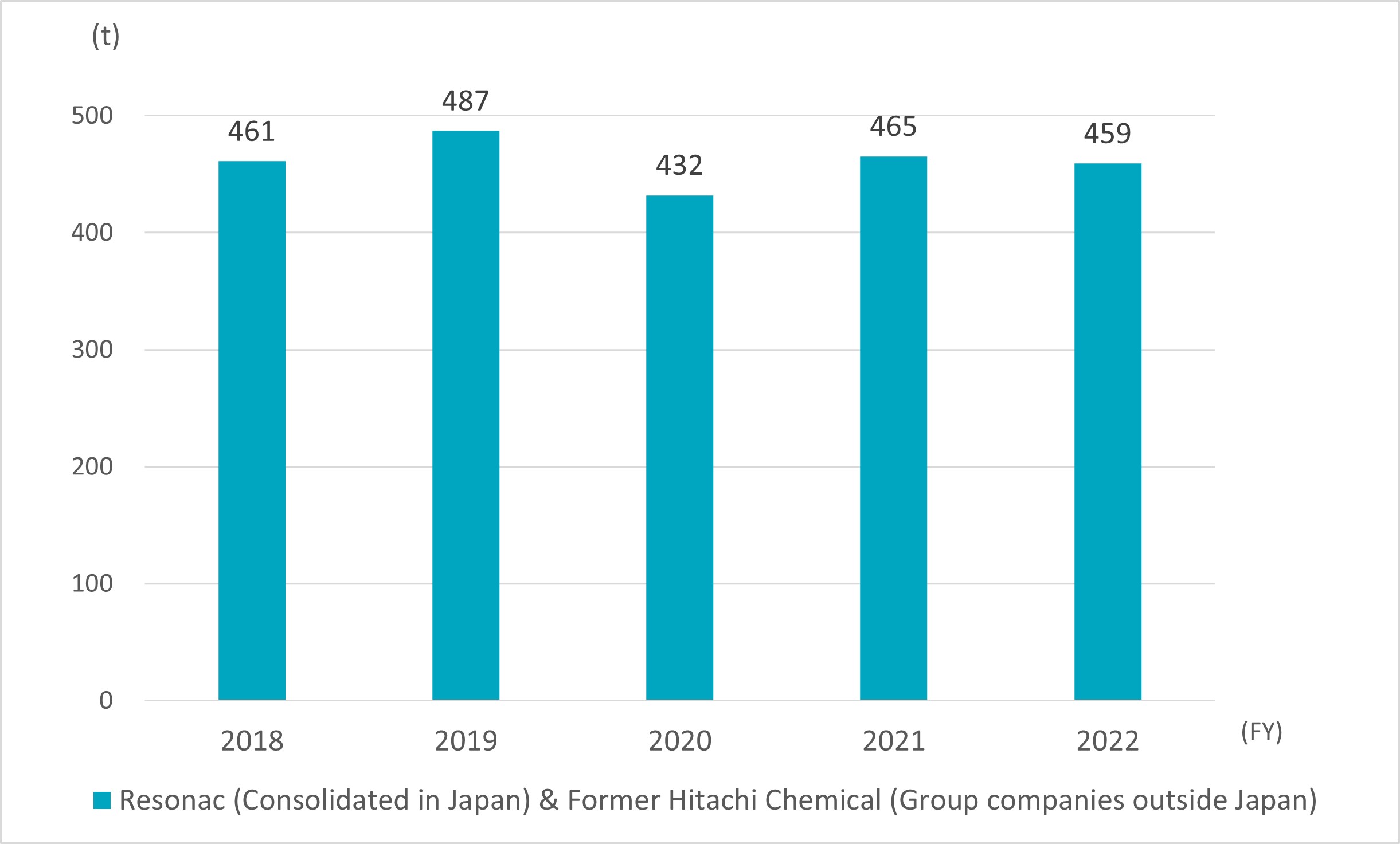Environmental Considerations; Water
Basic ideas and policies
The importance of water resources is recognized worldwide as a social issue, and we must strive to reduce the amount of water used through appropriate and efficient use of water resources. We must also endeavor to give consideration to the water cycle to ensure that water quality and function appropriate to both human activities and environmental conservation are maintained.
Recognizing that water scarcity is a global issue, Resonac is committed to using water effectively and reducing water consumption throughout the Group. We will also be treating water used in our business activities to reduce our environmental impact.
Efficient use of water to reduce its consumption
The Resonac Group has made targets for water resources as part of its Environment and safety Action Plan. We are fostering the effective use of water and reduction of its use at each of our sites in consideration of their individual business features. We are also working to maintain and increase the quality of water discharged from the sites.
In particular, at our sites located in areas prone to water shortages (water stress), we proactively engage in dialogue with local stakeholders to make efficient use of water for water conservation. Communities neighboring the Higashinagahara Plant are exposed to high water stress, making it difficult to secure water sources for firefighting. In response, we have had dialogues with officials of the prefectural government to obtain the prefecture’s approval for those communities to use water from the plant’s Toishigawa Kyu-suiso water tank for firefighting purposes. Also, for the Asahi Dam owned by the plant, we concluded an agreement to prevent Agano River flooding with the Hokuriku Regional Development Bureau of the Ministry of Land, Infrastructure, Transport and Tourism to prepare against the risk of flooding posed by typhoons and linear rainbands, which Japan has frequently experienced in recent years. We are thereby helping the national government enhance its anti-flooding measures. In the future, we will set our own water use targets on a medium- to long-term basis based on a detailed examination of water-related risks in the geographical areas where we are conducting operations and will announce the actual results achieved against the targets.

The amount of Water withdrawals (excluding seawater)

Discharge-water volume
TOPICSInitiatives at the Electronics Production Center of the Electronics Business Headquarters
Electronics Production Center of the Electronics Business Headquarters is working to reduce water consumption under the environmental target of efficiency improvement by 1% per year. The Environmental Management Committee, held monthly, monitors the status of efficiency improvement of each department to help achieve the water consumption reduction target. In 2022, we successfully improved efficiency by about 1.8%.
The Shimodate Plant took measures such as the reduction of the cooling water consumption through improved efficiency of heat exchangers, the prevention of water leakage by renewing aging underground piping, and the increase in the recycled and reused amount of cooling water by bolstering chiller facilities. As a result, we reduced groundwater consumption by about 70%.
Measures to reduce our impact on the aquatic environment
Based on the regulatory standards set by laws, regulations and ordinances, the Resonac Group set its own management criteria to monitor changes in chemical oxygen demand (COD) and the emissions of nitrogen, phosphorous and various other water pollutants, thereby reducing the environmental impact of its business activities.
At our major production bases in Japan, we recover wastewater from the manufacturing facilities for neutralization and the removal of solid substances. For wastewater that contains organic matter, we break down the matter by using microorganisms in the activated sludge process. For wastewater that is difficult to treat by the activated sludge method, we adopt adsorption treatment, coagulative separation, incineration treatment and other methods. We also monitor the discharge of water from our facilities to public waters. In the event that a failure of wastewater treatment equipment causes the generation of wastewater with a potentially high environmental impact, the blocking system installed at the discharge outlet is activated to prevent the water from being discharged to outside the facilities site.

COD emissions
